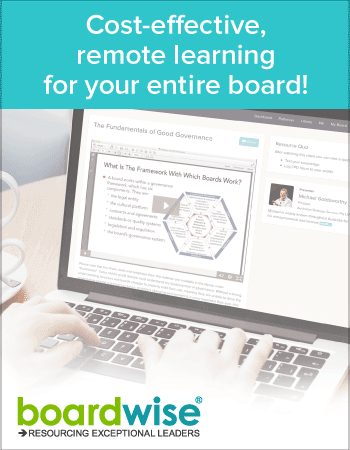Crafting Well-Structured Board Reports for Maximum Impact
-
boardpacks
Board Packs Crafting Well-Structured Board Reports for Maximum Impact
Board reports are a critical communication channel between management and the board. Their structure and organisation directly impacts how effectively they convey insights, enabling robust board discussions and oversight.
Follow these tips to optimise board report structure. For each section we’ve also included a basic short example.
Start With the Executive Summary
Kick off every board report with an executive summary presenting the core messages and purpose upfront. This grounds directors on what the report covers and why it matters.
For board reports, keep summaries concise - 1-2 paragraphs or 3-5 bullet points. Avoid verbose introductions that waste space reiterating the title. Summarise key takeaways, priorities, and requested actions. Provide just enough context on past activities to orient readers.
The recommendation in a decision-oriented report works hand-in-hand with the summary. The “what” of the recommendation along with the “why” in the summary provide clarity of intent.
Executive Summary Example
This report provides an overview of our literacy program progress and challenges this past quarter. Key issues include worsening staff shortages impacting program quality and pace of expansion. I recommend the board approve a 5% budget increase to address hiring challenges. Your guidance on additional recruitment and retention strategies would be welcomed.
Follow With Background and Context
The background section in a board report briefly covers relevant history and context directors need to understand the issues and recommendations. When writing imagine you are explaining the topic to a reasonably informed layperson rather than assuming deep familiarity.
Focus background content on:
-
Past board/committee communications on the subject - cite specific report dates.
-
Milestones, activities, decisions and participants related to the issue. Condense operational details - focus on strategic insights.
-
Legislative, economic, political or social dynamics essential for perspective. Avoid repeating context covered in other reports - reference instead.
The background leads smoothly into current issues and recommendations by bridging history with the present. Keep it succinct while ensuring directors have the context required.
Background example
At our January board meeting, 5-year strategic enrolment and reading proficiency goals were set for our literacy programs. My March update highlighted initial progress: 2 new reading centres launched and a $50k literacy grant secured.
Since then, we have faced mounting teacher vacancies, now at 3 positions. This significantly increases student-teacher ratios, risking program quality and outcomes. Our 10% enrolment increase this quarter compounds staff capacity issues. Previous hiring incentives had limited success attracting qualified candidates.
Spotlight Issues & Recommendations Upfront
With foundational background covered, spotlight priority issues, risks, impacts and recommendations requiring board input immediately after the background or executive summary. Don’t bury them deep in tediously and lengthy pages.
For decision-oriented reports, state requested actions in a concise yet comprehensive recommendation section. Construct stand-alone recommendations that translate easily into resolutions. For progress updates, highlight milestones, upcoming activities and deliverables.
Highlight trends, comparisons, capacity thresholds and external perspectives that lend insights on how recommendations align with performance benchmarks and strategic goals. Draw connections between data points to illuminate important relationships and interdependencies.
Issues & Recommendation Example
Current Issues and Recommendations
The teacher shortage remains our most pressing strategic concern. I recommend the board approve a 5% budget increase to fund higher salaries and signing bonuses to aid hiring. Exploring an teaching fellowship is another option to alleviate staffing gaps.
Additionally, over 300 community volunteers supported programs last quarter. Better optimising volunteer roles could help address staff capacity issues. The upcoming Book Drive also presents partnership potential.
I request the board’s input on the proposed budget amendment and additional strategies to improve teacher recruitment and retention. Your guidance will help ensure we achieve enrolment and literacy goals.
Structure Content Logically
Organise report contents in order of importance, relevance and logical flow. Group related topics while maintaining clear transitions between sections.
- Number sections and pages for easy reference.
- Apply consistent styles and formats across recurring reports to aid director familiarity.
- Use informative headings, bullets and bolding to guide focus.
- Present key figures and conclusions prominently through placement, repetition and visual contrast.
- Summarise complex qualitative or quantitative data in charts, dashboards and other visualisations adjacent to text summaries. But avoid letting visuals overwhelm narrative explanations.
- Clarify terminology with a definitions table.
Check Visual Appeal and Readability
Reports with dense, unbroken walls of text are difficult to digest. Enhance visual appeal and readability by:
-
Incorporating ample white space between sections, images, paragraphs and bullet points
-
Keeping paragraphs focused with concise topic sentences and 2-5 sentences per paragraph
-
Using page numbering, footers and contents pages for easy navigation
-
Following corporate branding guidelines on colours, fonts and styles
-
Checking formatting renders consistently across digital devices if circulated electronically
Verify Accuracy and Consistency
Scrutinise report data, claims, citations and terminology for accuracy and consistency:
-
Validate data reliability, currency, methodology and source integrity
-
Ensure terminology and definitions match organisation style guides
-
Check calculations, statistics and metrics match appendices
-
Confirm all abbreviations are defined on first use and thereafter consistent
-
Cross-check internal report consistency and alignment with past communications
Flawless accuracy and clarity builds director confidence in management’s professionalism and transparency.
Refine Structure and Content iteratively
Great board reports are honed through iterative refinement. After drafting sections, step back to reassess structure, flow and emphasis holistically. Refactor arguments and logic chains to strengthen clarity and continuity.
Road test draft reports with unbiased colleagues. Request brutally constructive feedback targeting gaps, opacity and biases. Synthesise external perspectives to finalise a report that informs and enlightens directors.
With a well-structured and articulated report as the foundation, the board is equipped for constructive dialogue and to progress strategic priorities.
Additional Resources
Sign up to a 45-day free trial of Our Cat Herder to take our Background Paper (board paper) building tool for a spin.
Download a PDF Board Paper Template.
Download a Microsoft Word version of our Board Paper Template.
View a Board Paper Example that uses the above board paper template.
Company Secretary Playbook: Effective Board Meetings
Company Secretary Playbook: The Art of Reviewing and Refining Board Papers
Streamlining the Work of the Board
How to Structure Your Board Packs
Frequently Asked Questions
How long should a board report executive summary be?
The executive summary should concisely summarise the core messages and purpose of the report in 1-2 paragraphs or 3-5 bullet points. Avoid overly verbose summaries that reiterate the title or waste space unnecessarily introducing the topic. Keep it focused on the key takeaways, strategic priorities, risks, recommendations, and requested board actions. Provide just enough high-level context on past activities and milestones to orient the board members on why the report matters without getting into granular operational details. Aim for an executive summary length of no more than half a page.
What level of detail should the background section provide?
The background section should briefly cover the contextual history, milestones, and developments the board needs to understand the current issues and recommendations, without assuming deep prior familiarity with the topic. Write it as if explaining to a reasonably informed layperson. Focus on strategic insights rather than granular operational details. Reference past board/committee communications on the topic and cite specific report dates. Highlight milestones, activities, decisions and key participants related to the issue over time. Call out important legislative, economic, political or social dynamics that lend perspective. Avoid repeating background context already covered in other recent reports - reference those instead. Keep the background section succinct but ensure it bridges past events with the present issues in a way that sets up the logical flow into upcoming section.
Where should key issues and recommendations be highlighted?
The priority issues, risks, impacts, and recommendations requiring board input should be spotlighted immediately after the executive summary and/or background section, before diving into the body of the report. Don't bury them deep in pages of detail. Dedicate a specific, concise section to state requested board actions, whether that is decision-oriented recommendations that translate into resolutions or highlighting milestones, upcoming activities, and deliverables for progress updates. Use clear section headings like 'Current Issues and Recommendations'.
How can visual appeal and readability of board reports be improved?
There are several techniques to enhance visual appeal and readability: Incorporate ample white space between sections, images, paragraphs and bullet points. Keep paragraphs tightly focused with concise topic sentences and 2-5 sentences per paragraph. Use page numbering, headers/footers, and table of contents for easy navigation. Follow corporate branding guidelines on colours, fonts and styles. Check that formatting renders consistently across digital devices if circulating electronically.
What should you verify for accuracy and consistency?
Thoroughly scrutinise report data, claims, citations, terminology, statistics, and metrics for accuracy and consistency. Validate data reliability, currency, methodology, and source integrity. Ensure terminology and definitions match organisational style guides. Check calculations and metrics match figures in appendices. Confirm abbreviations are defined at first use and remain consistent thereafter. Cross-check alignment of the report with past communications. Flawless accuracy and clarity builds board confidence in management's professionalism and transparency.
-



